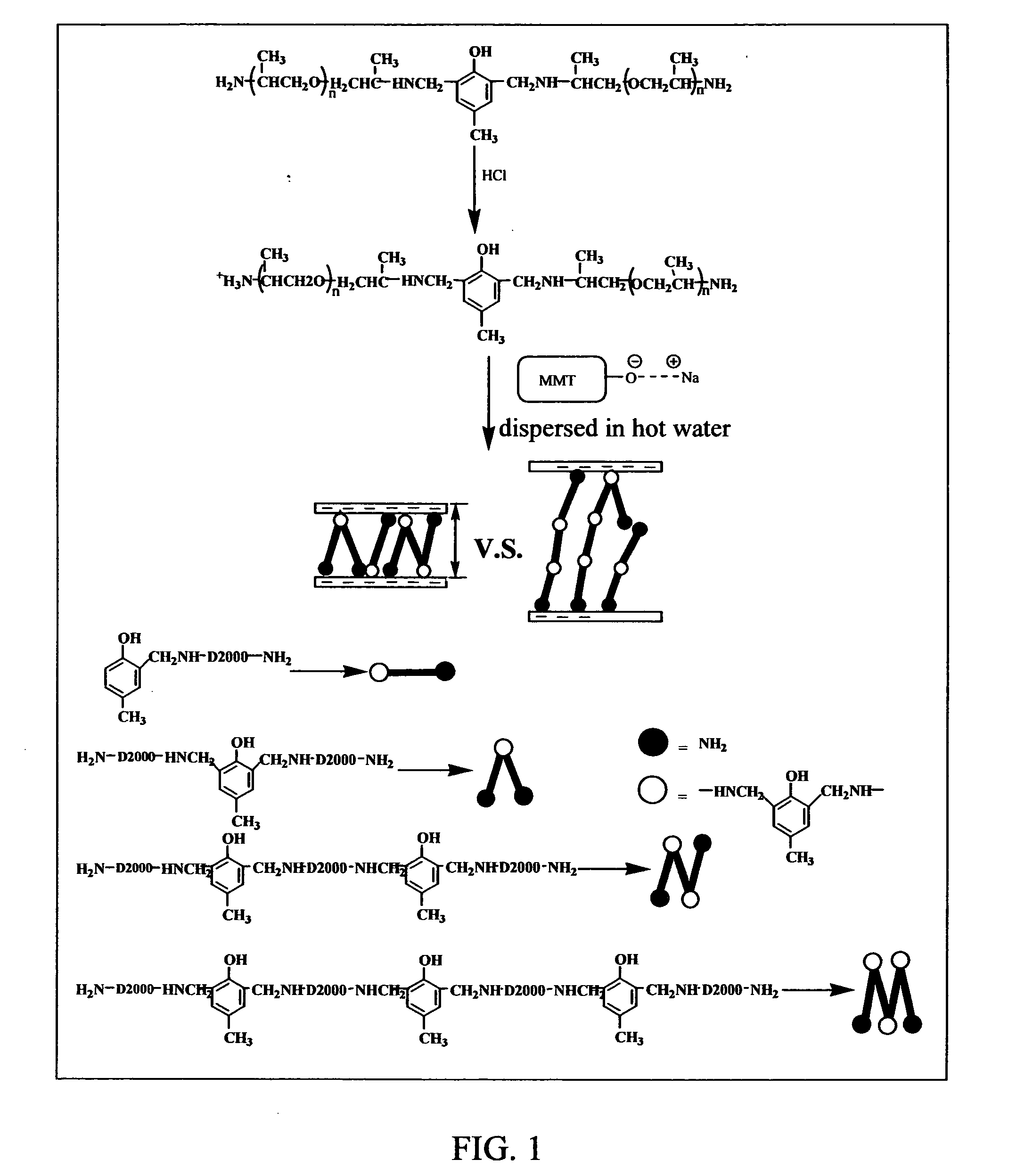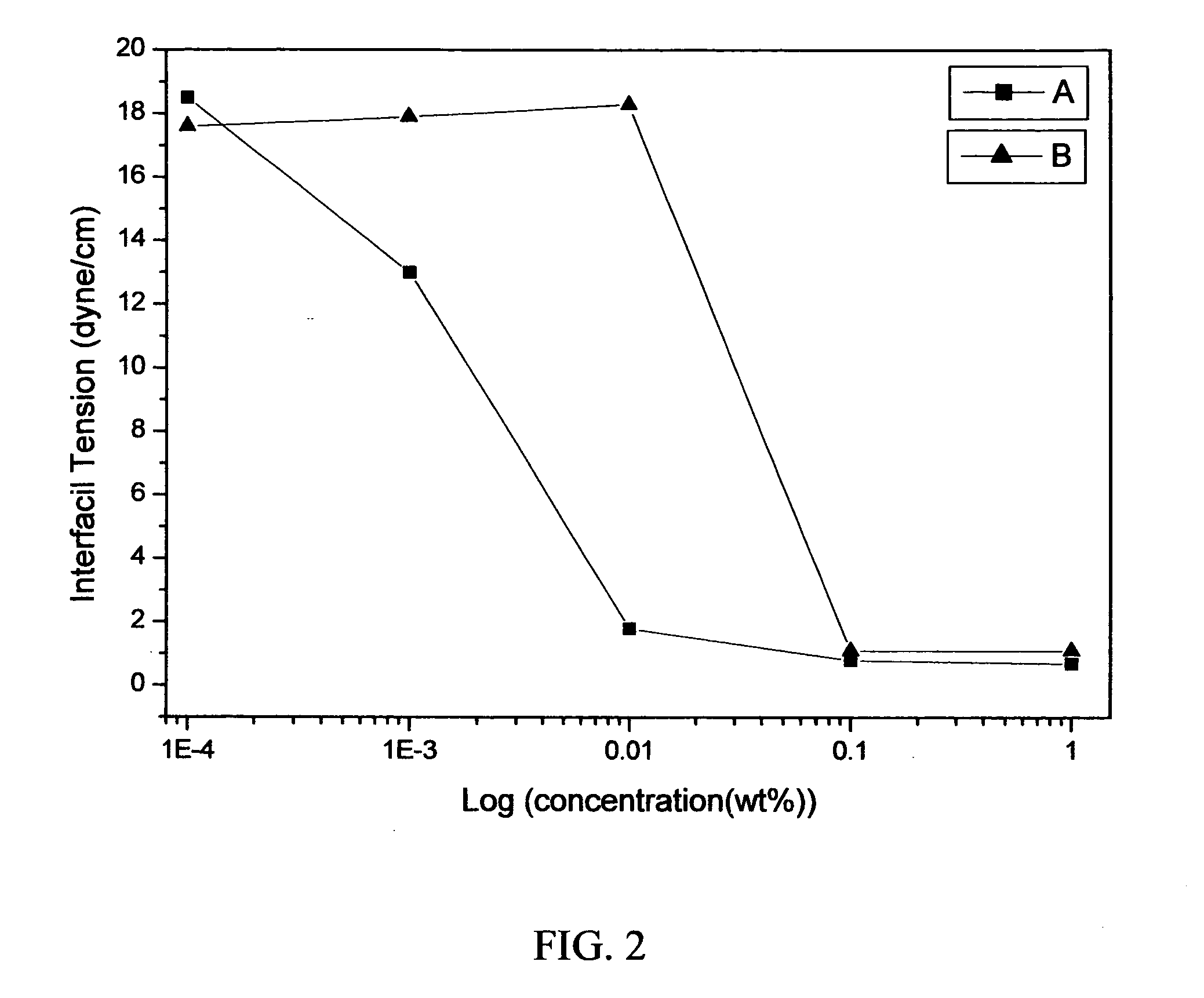Method for producing clay/AMO complex and nanosilica plate
a technology of clay and amo complex, which is applied in the direction of silicon oxide, silicon compounds, inorganic insulators, etc., can solve the problems of insufficient affinity between the intercalating agent and the polyolefin resin, the hydrophilic nature of the aminocarboxylic acid intercalating agent, and the inability to exfoliate the layered silicate, etc., to achieve excellent interfacial and surfactant effect, facilitate the emulsion process, and the effect o
- Summary
- Abstract
- Description
- Claims
- Application Information
AI Technical Summary
Benefits of technology
Problems solved by technology
Method used
Image
Examples
examples 1-5
[0032] The complexes of the present invention are produced according to steps of:
Step 1: Swelling the Layered Inorganic Silicate Clay (Sodium Form of Montmorillonite or Na+-MMT)
[0033] Na+-MMT (5 g) is dispersed in water (1,000 ml, 80° C.) by powerfully stirring for four hours, and then a stable and uniform slurry in earth color is formed.
Step 2: Synthesizing the Intercalating Agent AMO
[0034] P-cresol (5 g, 0.046 mol) and D2000 (185 g, 0.092 mol) are mixed by refluxing in toluene at 90° C. for 3 hours by using a Dean-Stark trap. Formaldehyde solution (37%, 10 g, 0.12 mol) is then added into the solution and heated to 130° C. for 5 hours. The reaction is stopped after removing the generated water before the formation of AMO gel. By measured with GPC, four peaks of Mw 2598, 5842, 9234 and 16952 oligomers can be observed. Four oligomers are analogs which can be used as such for intercalation. The titration values of primary amine, secondary amine and tertiary amine are 0.37 meq / g,...
example 6
[0037] Repeat steps of Example 1, but HCl is added in a different ratio to the MMT as listed in Table 1. The interlayer distance of the product is measured by X-ray diffraction and listed in Table 1.
PUM
| Property | Measurement | Unit |
|---|---|---|
| heat distortion temperature | aaaaa | aaaaa |
| cation exchange capacity | aaaaa | aaaaa |
| mole ratio | aaaaa | aaaaa |
Abstract
Description
Claims
Application Information
 Login to View More
Login to View More - R&D
- Intellectual Property
- Life Sciences
- Materials
- Tech Scout
- Unparalleled Data Quality
- Higher Quality Content
- 60% Fewer Hallucinations
Browse by: Latest US Patents, China's latest patents, Technical Efficacy Thesaurus, Application Domain, Technology Topic, Popular Technical Reports.
© 2025 PatSnap. All rights reserved.Legal|Privacy policy|Modern Slavery Act Transparency Statement|Sitemap|About US| Contact US: help@patsnap.com



